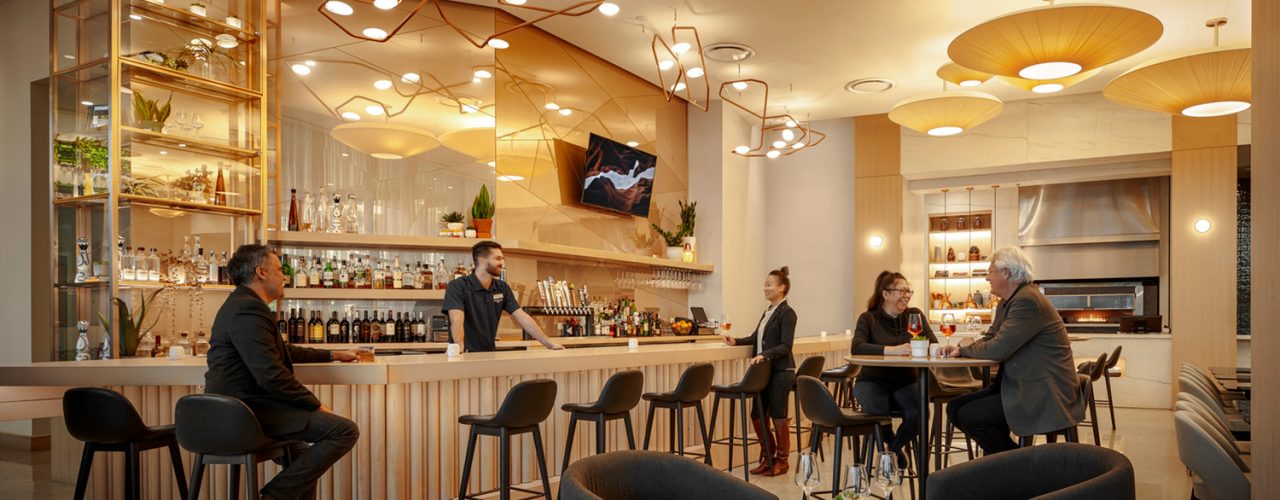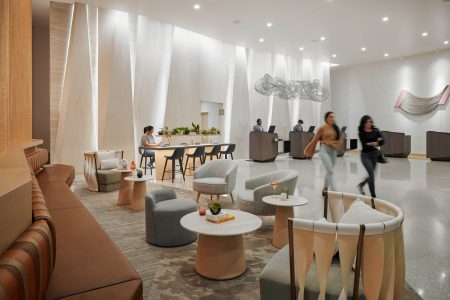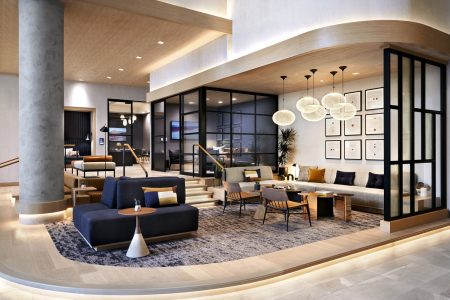Hotel Design for the Next Travel Boom

RSP’s Joe Ellis and Erin Yi discuss how hotel design can balance predictability and protocols with novel guest experiences for the post-COVID travel boom.
The pent-up demand for travel is real. After a year cooped up with nowhere to go, Americans are awash in PTO. Now that COVID vaccines are widely available, it seems people are itching for a vacation. For the hospitality industry, the multi-million-dollar question is what travelers will be looking for in our new normal.
A DELICATE BALANCE FOR HOTEL DESIGN
For the industry’s upper tiers (four stars and above), some experts are likening the expected increase in travel to the Roaring 20s. For the rest of the market, we will likely see a more modest bump, but the pressure will be on to give travelers a great experience, wherever they go and wherever they stay. The important thing to remember is that brands still have to make good on their promises. After a year of uncertainty, guests are looking for the perfect balance of predictability and spontaneity.
Many travelers will find comfort in standard check-in procedures and ongoing COVID safety and cleanliness protocols. But they are also looking for novelty and experience, and that’s where design makes a big difference.
6 WAYS FORWARD FOR POST-COVID HOTEL DESIGN
1. Give the design regional context
Within the hierarchy of hotel brands, the luxury tier has always had one-of-a-kind designs and furnishings at each location. We’re seeing that the design flexibility once the preserve of the upper echelons of the industry is trickling down to mid-tier operators, and the response has been overwhelmingly positive. Travelers to Phoenix, for example, want to feel like they’re in Phoenix when they walk into their hotel, and not in a “vanilla box” hotel anywhere in the world. By drawing on local artists, regional color palettes, and historic context, we’ve been working with our clients to give their hotels a unique feel, even within the strictest brand guidelines.
2. Let guests choose their own adventure
Business travelers have very different needs to leisure or convention travelers. By offering an array of guest room types, on-site activities, and updated dining options, guests can make a hotel work for what they need in the moment. We see a real gap in the market for brands that can be more nimble with a “kit of parts” hotel design that allows guests to make what they want out of their hotel stay.
3. Put a view anywhere.
If your hotel is on a stunning waterfront or has a birds-eye view of a major city, disregard this one. But for the vast majority of hotels, investing in common areas and public space can have a huge impact. Lobbies are now very social places, blurring the line between public and private space. Gardens and inviting outdoor spaces can give people a safer place to gather and provide overflow space. Ongoing health protocols mean that guests will likely be spending more time on the property than in the past. Outdoor space can make that a much more enticing proposition.
4. Make it hyper-local
Bring in a local chef, sell treats from a nearby bakery, or hand out maps to favorite local spots. These touches give guests the feeling of a boutique hotel while still getting the perks of a big brand. It makes a trip more memorable and can build brand loyalty.
5. Make F&B the star
A great bar or restaurant can make any hotel a true destination for locals and tourists alike. Design details that shine and a unique ambiance can completely change people’s perception of a brand. It can take a hotel from a place to sleep to a true landmark in a city. Star chefs, unique designs, mixologists, one-time menus, and exclusive events can elevate a location without a major renovation. And don’t underestimate the value of your people—at top hotels, chefs and mixologists can develop a huge following, raising the profile for the hotel internationally. But the hard truth is that sought-after people don’t want to work in uninspiring places, so design and brand are elements that have a ripple effect beyond the immediate guest impression. Finally, don’t bury the F&B; put it at the front door so it burnishes the brand.
6. Lean Into the “Smart Hotel”
Technology—or the better world it allegedly promises—has been a bright spot through the pandemic, and the hotel industry is no exception. While it may not be the panacea some have claimed, some things simply make sense. Many hotels have adopted remote check-in and other services through mobile phones to better comply with social distancing guidelines. Major hotel operators have implemented contactless technologies such as mobile key entry and room temperature controls to help reduce touchpoints and potential staff interactions. This is no longer wizardry or luxury, but a necessity and we’re already seeing it make a difference. But again, it’s a delicate balance between still offering superior, human-to-human service while staying current on tech-savvy guest expectations.
THE BEST OF NOVEL AND PREDICTABLE
It remains to be seen when the travel industry will bounce back to pre-pandemic levels. It’s safe to say that everyone’s perspectives have changed and what travelers looked for in a hotel two years ago, may be very different from their expectations now. Giving guests a balance between a novel experience and the predictability of a trusted brand will give everyone the best of both worlds.







